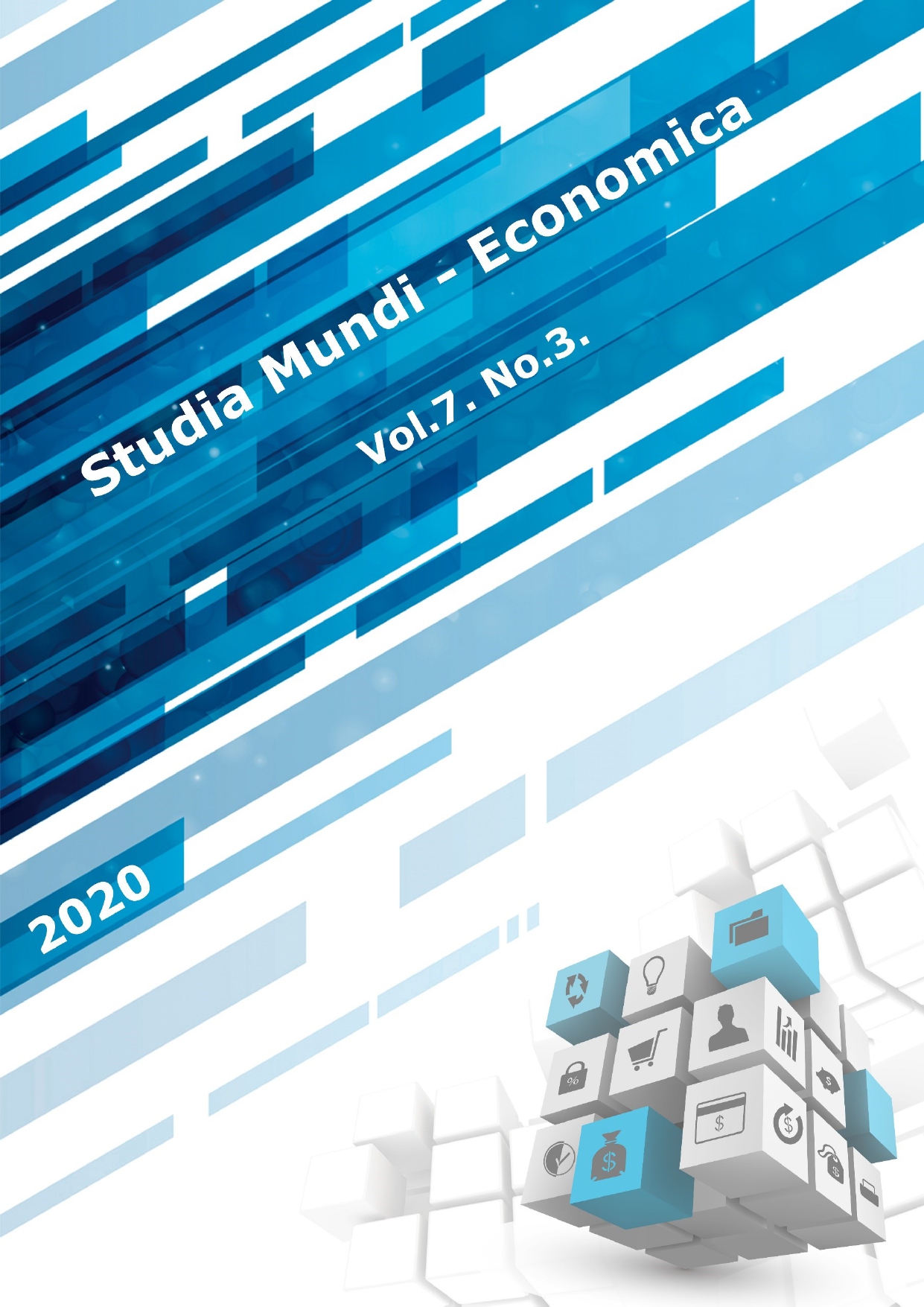Higher employee commitment by targeted motivation
DOI:
https://doi.org/10.18531/Studia.Mundi.2020.07.03.15-26Keywords:
az elkötelezettség háromkomponensű modellje, szakmai elkötelezettség, motiváció, ösztönzés, öndeterminációs elméletAbstract
The aim of the study is to present the relationship between the identified motivational type of self-determination theory and the three-component model of employee commitment (affective, continuous, normative) and professional commitment. We used the method of questionnaire survey, we conducted primary research among the students and professional partners of the Faculty of Economics and Social Sciences of Eszterházy Károly University. The basic population of our research was examined for 410 respondents. In order to analyze the data we used the SPSS statistical program. In addition to the methods of descriptive statistics, we used non-parametric tests (Mann-Whitney) and correlation (Spearman rank correlation). Our results did not confirm the previous researchers experience, namely managers affective, normative and professional commitment are higher than subordinates’. Also, managers are more motivated than subordinates. Examining the correlation between commitment and motivation, we also found different results among the group of manager and subordinates. The relationship between amotivation and affective, continuous and professional commitment is stronger in the case of managers than subordinates. In addition, the relationship between external regulation and affective, continuous and normative commitment is stronger in the case of subordinates than managers.
References
Allen, N. J. – Meyer, J. P. (1990): The measurement and antecedents of affective, continuance and normative commitment to the organization. Journal of Occupational Psychology. Vol. 63 (1), 1–18. DOI: https://doi.org/10.1111/j.2044-8325.1990.tb00506.x ISSN: 2044-8325
Aranya, N. – Pollock, J. – Amernic, J. (1981): An examination of professional commitment in public accounting. Accounting, Organizations and Society. Vol 6 (4), 271-280. DOI: https://doi.org/10.1016/0361-3682(81)90007-6 ISSN: 0361-3682
Benke M. (2018): Motivációs elméletek elemzése, fókuszban az önmeghatározás elmélet. Taylor: gazdálkodás- és szervezéstudományi folyóirat. Vol. 10 (1),105–114. ISSN 2676-8917
Bruning, N. S. – Snyder, R. A. (2017): Sex and Position as Predictors of Organizational Commitment. Academy of Management Journal. Vol. 26 (3), 485-491. DOI: https://doi.org/10.5465/256259 ISSN: 0001-4273
Centers, R. – Bugental, D. E. (1966): Intrinsic and extrinsic job motivations among different segments of the working population. Journal of Applied Psychology. Vol. 50 (3), 193–197. DOI: https://doi.org/10.1037/h0023420 ISSN: 0021-9010
Colarelli, S.M. – Bishop, R.C. (1990): Career Commitment: Functions, Correlates and Management. Group and Organization Studies Vol. 15 (2), 158 – 78. DOI: https://doi.org/10.1177/105960119001500203 ISSN: 0364-1082
Cook, D. A. – Artino, A. R. (2016): Motivation to learn: an overview of contemporary theories. Medical Education. Vol. 50 (10), 997-1014. DOI: https://doi.org/10.1111/medu.13074 ISSN: 1365-2923
Csíkszentmihályi M. (2018): Flow – Az áramlat – A tökéletes élmény pszichológiája. Budapest, Akadémiai Kiadó Zrt., 372 p. ISBN: 9789630588331
Deci, E. L. – Olafsen, A. H. – Ryan, R. M. (2017): Self-Determination Theory in Work Organizations: The State of a Science. Annual Review of Organizational Psychology and Organizational Behavior Vol. 4 (1), 19–43. DOI: https://doi.org/10.1146/annurevorgpsych-032516 -113108 ISSN: 2327-0608
George, C. (2009): The Psychological Contract: Managing And Developing Professional Groups. McGraw-Hill Education. New York, USA, Open Unicersity Press, 174 p. ISBN-13: 978-0335216123
Kiss Cs. (2010): A szervezeti elkötelezettség elméletei. Munkaügyi Szemle Vol. 54 (2), 24-23. ISSN 0541-3559
Lui D. – Zhang S. – Wang L. – Lee TW. (2011): The effects of autonomy and empowerment on employee turnover: test of a multilevel model in teams. Journal of Applied Psychology. Vol. 96 (6), 1305–316. DOI: https://doi.org/10.1037/a0024518 ISSN: 0021-9010
Martos T. (2016): Motiváció, értékek és társas kapcsolatok: az öndetermináció elméletének alapjai. In: Baritz, Sarolta Laura; Dabóczi, Gergely (szerk.) Emberközpontú gazdaság: A Keresztény Társadalmi Elvek a Gazdaságban (KETEG) képzés szakkönyve. Budapest, KETEG Oikonomia Kutató Intézet Alapítvány, 242-255. ISBN 9786158061803
Meyer, J. P. – Allen, N. J. (1991): A three-component conceptualization of organizational commitment. Human Resource Management Review Vol. 1 (1.), 61-89. DOI: https://doi.org/10.1016/1053-4822(91)90011-Z ISSN: 1053-4822
Meyer, J. P. – Parfyonova, N. M. (2010): Normative commitment in the workplace: A theoretical analysis and re-conceptualization. Human Resource Management Review Vol. 20 (4), 283−294. DOI: https://doi.org/10.1016/j.hrmr.2009.09.001 ISSN: 1053-4822
Morrow, P. C. – Wirth, R. E. (1989): Work commitment among salaried professionals. Journal of Vocational Behavior. Vol. 34 (1), 40–56. DOI: https://doi.org/10.1016/0001-8791(89)90063-8 ISSN: 0001-8791
Mueller, C. W. – Wallace, J. E. – Price, J. L. (1992): Employee commitment: resolving some issues. Work and Occupations Vol. 19 (3), 211-236. DOI: https://doi.org/10.1177/0730888492019003001 ISSN: 0730-8884
Rhoades, L. – Eisenberger, R. – Armeli, S. (2001). Affective commitment to the organization: The contribution of perceived organizational support. Journal of Applied Psychology Vol. 86 (5), 825–836. DOI: https://doi.org/10.1037/0021-9010.86.5.825 ISSN: 0021-9010
Sanli, E. – Patterson, J. T. – Bray, S. R. – Lee, T. D. (2012): Understanding SelfControlled Motor Learning Protocols through the Self-Determination Theory. Frontiers in Psychology 3:611. DOI: https://doi.org/10.3389/fpsyg.2012.00611 ISSN: 1663-4365
Scholl, R. (1981): Differentiating organisational commitment from expectancy as motivating force. Academy of Management Review Vol. 6 (4), 589-599. DOI: https://doi.org/10.5465/amr.1981.4285698 ISSN: 0363-7425
Tremblay, M. A. – Blanchard, C. M. – Taylor, S. – Pelletier, L. (2009): Work Extrinsic and Intrinsic Motivation Scale: Its Value for Organizational Psychology Research. Canadian Journal of Behavioural Science. Vol. 41 (4) 213-226. DOI: https://doi.org/10.1037/a0018176 ISSN: 1879-2669
Wasti, S. (2003): Organizational commitment, turnover intentions and the influence of cultural values. Journal of Occupational and Organizational Psychology. Vol. 76 (3) 303-321. DOI: https://doi.org/10.1348/096317903769647193 ISSN: 2044-8325
Richer S.F. – Blanchard C. – Vallerand, R.J. (2002): A motivational model of work turnover. Journal of Applied Social Psychology Vol. 32 (10), 2089–2113. DOI: https://doi.org/10.1111/j.1559-1816.2002.tb02065.x ISSN:1559-1816
Ryan, R. M. – Deci, E. L. (2000): Self-Determination Theory and the Facilitation of Intrinsic Motivation, Social Development, and Well-Being. American Psychologist. Vol. 55 (1) 68-78. DOI: https://doi.org/10.1037110003-066X.55.1.68 ISSN: 0003-066X
Visser, C. F. (2017). The motivation continuum: self-determination theory in one picture. http://www.progressfocused.com/2017/12/the-motivation-continuumself.html
Downloads
Published
Issue
Section
License
Copyright (c) 2020 Kozák Anita

This work is licensed under a Creative Commons Attribution-NonCommercial-NoDerivatives 4.0 International License.
A folyóirat Open Access (Gold). Cikkeire a Creative Commons 4.0 standard licenc alábbi típusa vonatkozik: CC-BY-NC-ND-4.0. Ennek értelmében a mű szabadon másolható, terjeszthető, bemutatható és előadható, azonban nem használható fel kereskedelmi célokra (NC), továbbá nem módosítható és nem készíthető belőle átdolgozás, származékos mű (ND). A licenc alapján a szerző vagy a jogosult által meghatározott módon fel kell tüntetni a szerző nevét és a szerzői mű címét (BY).






